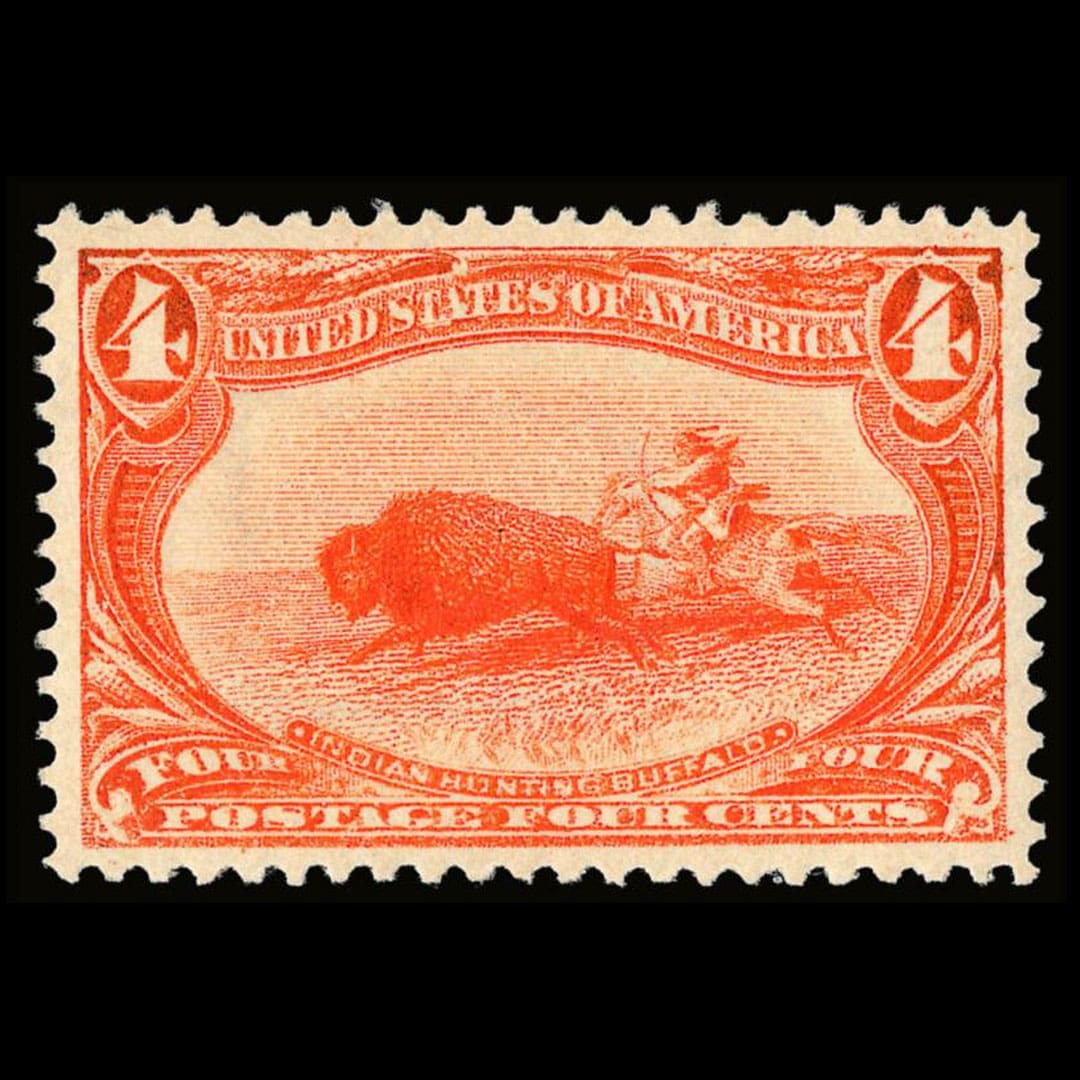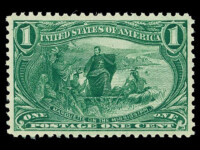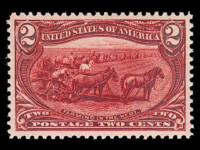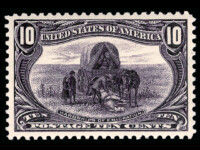Scott #287 is part of the 1898 Trans-Mississippi Exposition Issue, a series released by the United States Post Office Department to coincide with the exposition in Omaha, Nebraska.
This series was intended to demonstrate the nation’s progress, with each denomination assigned to a scene reflecting themes of agriculture, expansion, and development in the American West. Scott #287 carried a denomination of four cents, a rate positioned to handle specific classes of mail beyond the standard letter rate.
While the set included nine different denominations, the four-cent value is particularly tied to scenes that emphasize the transformation of the western frontier. Unlike some stamps in the series that were subject to later reissues or color changes, Scott #287 was produced for a short period in 1898, aligning its use with the duration of the exposition.
Design & Print
The stamp was printed by the Bureau of Engraving and Printing, which had assumed exclusive responsibility for U.S. postage production following the government’s decision to transition away from private banknote companies such as the American Bank Note Company. Production began in 1898, and quantities were determined according to anticipated demand for four-cent postage during the exposition year.
The design depicts a Native American engaged in a buffalo hunt, engraved with fine linework typical of the Bureau’s late 19th-century capabilities. The central vignette is framed by ornamental scrolls, with “United States of America” inscribed across the top and “Four Cents” displayed clearly at the bottom. The stamp was issued in orange, a distinctive color assignment within the set that helps differentiate it from other denominations.
This visual presentation corresponded with the broader government goal of producing stamps that were both functional in circulation and representative of national themes of progress and development.
Postal Usage
The four-cent denomination served a functional role in the U.S. postal rate system of 1898. At the time, the standard domestic first-class letter rate was two cents per ounce, which made the four-cent value suitable for heavier letters weighing up to two ounces.
It was also used for certain categories of international mail, including double-weight letters to foreign destinations under Universal Postal Union guidelines, as well as for combinations with other denominations to satisfy higher-rate postal services such as registered mail. This denomination allowed postal patrons to efficiently cover multi-tiered rates without relying exclusively on lower-value multiples.
Its issuance reflected the postal administration’s understanding of the need for denominations that could accommodate not only standard correspondence but also increasingly complex domestic and international postal transactions.
Identification
Scott #287 is identifiable through several design and production characteristics. The stamp measures approximately the same dimensions as other values in the Trans-Mississippi series, but its orange coloration sets it apart immediately from the surrounding denominations.
The engraving features a Native American on horseback in active pursuit of a buffalo, a design element unique to the four-cent value and not repeated in other issues. The denomination “Four Cents” appears in spelled-out words rather than numerals within the design, consistent with the conventions of the series. Perforations are gauge 12, aligning with other stamps produced by the Bureau at this time.
Specialists identify Scott #287 by carefully examining the quality of line engraving, particularly in the detail of the buffalo and rider, which were finely executed. Close comparison to other values in the series confirms its distinction, as no other denomination shares its vignette or its orange color assignment. These elements make it straightforward to differentiate Scott #287 from the other issues in the 1898 Trans-Mississippi Exposition set.
It’s design was reissued in 1998 commemorating the 100 year anniversary of the Trans-Mississippi stamp set. The 1998 issue can be distinguished by it’s bi-color printing where the vignette is black, versus the 1898 issue was printed in one color.
























Ask A Question Or Leave A Comment